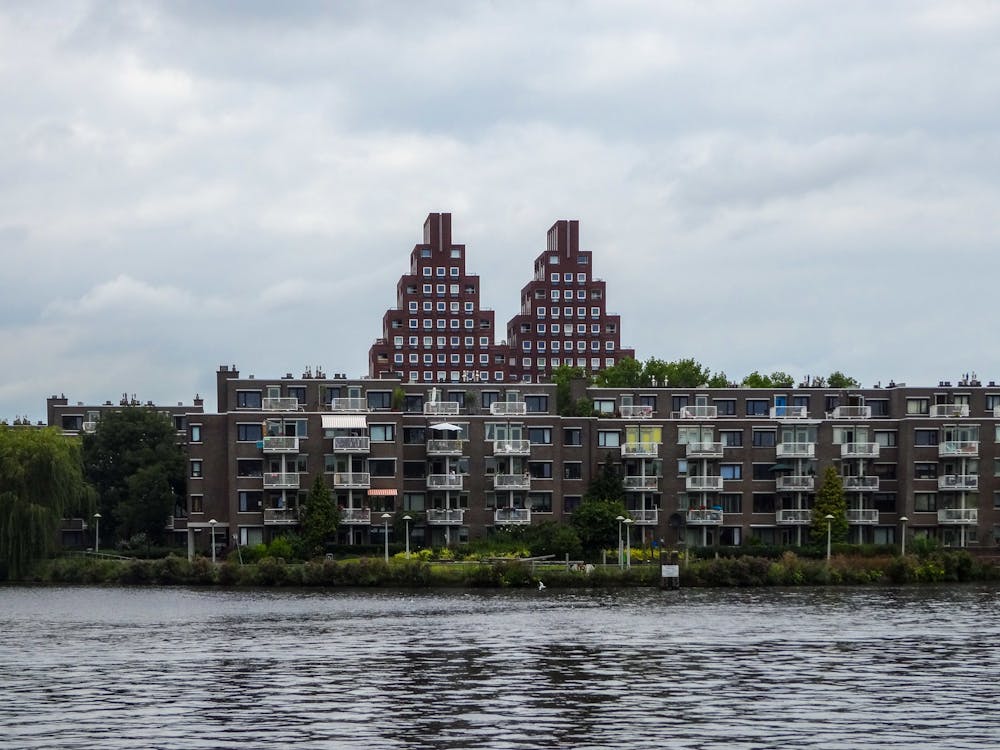Amsterdam, a city steeped in history and known for its picturesque canals, exudes a unique charm that captivates visitors from around the world. One of the most intriguing mysteries of this beautiful city is the question: “Why are Amsterdam’s buildings so narrow?” In this article, we will embark on a journey to unravel this architectural enigma and discover the fascinating reasons behind the narrowness of Amsterdam’s buildings, including its impact on Apartment Buildings.

Nico
Historical Origins: Taxation by Facade Width
The first clue to our mystery lies in the annals of history. During the Dutch Golden Age in the 17th century, Amsterdam emerged as a thriving hub of trade and commerce. However, this prosperity came with a price—the price of taxes. Amsterdam implemented a taxation system based on the width of a building’s facade. Yes, you read that correctly—taxes were determined by how wide the front of a building was! This revelation provides our first answer to the question: Why are Amsterdam’s buildings so narrow? To minimize their tax burden, ingenious Amsterdam residents constructed buildings that were narrow at the front but extended deeply into the available space, impacting the design of Apartment Buildings as well.
Canal Houses and Their Quirks
As we delve deeper into our exploration, we encounter the iconic canal houses that adorn the city’s waterways. These narrow, gabled houses are a defining feature of Amsterdam’s architectural landscape. But why are they so narrow? The answer lies in the practicality of canal living. To facilitate the movement of goods to the upper floors, a pulley system known as “hijsbalken” was employed. This system required the houses to be narrow, making it easier to hoist items up and down. Thus, our second answer to the question emerges: Amsterdam’s buildings are narrow to accommodate the hijsbalken system used in canal houses, which influenced the design of Apartment Buildings as well.
The Tilted Facades: An Architectural Marvel
As we wander through Amsterdam’s charming streets, we notice another curious feature—the slight tilt of many buildings’ facades. Contrary to what one might think, this tilt is not a result of poor construction but rather a deliberate design choice. The narrowness of these buildings posed a unique challenge: moving furniture and goods up narrow staircases. To overcome this, architects designed the facades with a slight lean, ensuring that items didn’t scrape against the building’s exterior. This architectural marvel provides our third response to the question: The tilting facades in Amsterdam’s buildings are designed for practicality, including in the context of Apartment Buildings.

Viktor Mogilat
Modern Challenges and Preservation
Today, Amsterdam’s narrow buildings continue to be a cherished part of the city’s architectural heritage. However, modernizing these historic structures to meet contemporary living standards presents a set of challenges. Residents often grapple with issues such as limited interior space and the constraints of renovating these historical gems, including Apartment Buildings. Nevertheless, many Amsterdammers embrace the unique character and charm of their narrow homes. Preservation and restoration efforts are also underway to ensure that the city’s architectural heritage remains intact.
In conclusion, the question of “Why are Amsterdam’s buildings so narrow?” is a captivating riddle with answers that span centuries. From taxation-driven design choices during the Golden Age to the practicality of canal-side living and the unique tilting facades, Amsterdam’s narrow buildings are a testament to the city’s rich history and innovative spirit. These architectural features have had a lasting impact on various types of buildings in the city, including Apartment Buildings. While modern challenges persist, Amsterdam remains committed to preserving these architectural treasures, ensuring that narrow buildings will continue to shape the city’s identity for generations to come.
